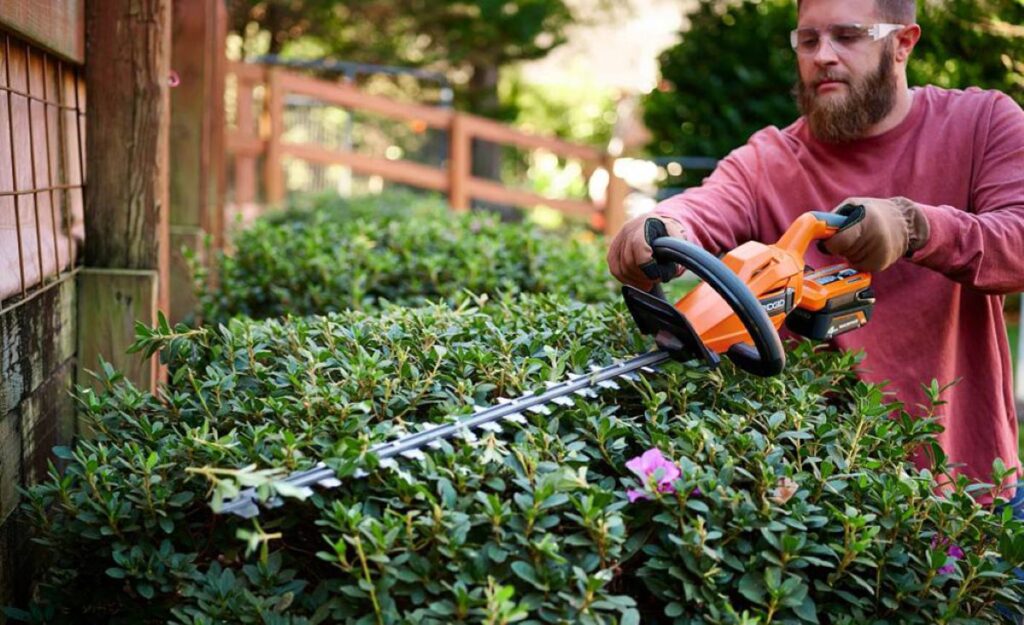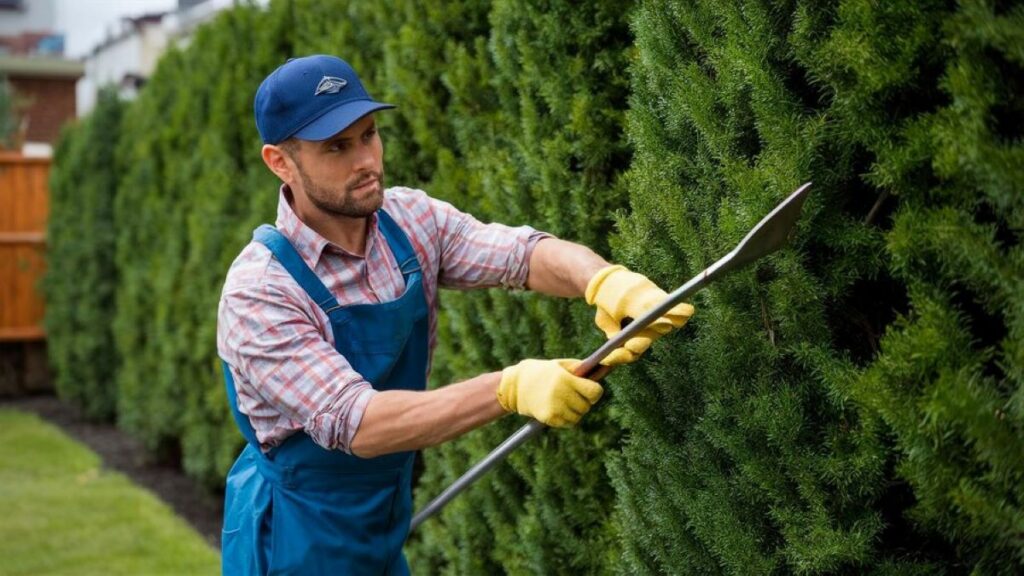Introduction to Hedge Trimming
Hedge trimming is an essential aspect of garden maintenance that contributes significantly to the aesthetic appeal of your outdoor space. Well-maintained hedges not only enhance the beauty of your garden but also provide privacy, act as windbreaks, and support local wildlife. Understanding the importance of proper trimming techniques and maintenance practices can help ensure your hedges remain healthy and vibrant throughout the year.
Benefits of Regular Hedge Trimming
Regular trimming promotes healthy growth and prevents hedges from becoming overgrown. Overgrown hedges can lead to a range of issues, including disease, pest infestations, and a decline in overall health. By trimming hedges regularly, you encourage denser foliage and a more attractive shape, which can greatly enhance the overall look of your garden.
If you’re wondering what to do with hedge trimmings, there are several eco-friendly options. You can compost the clippings to enrich the soil, use them as mulch to retain moisture and suppress weeds, or dispose of them responsibly through green waste collection. Proper handling of hedge trimmings helps maintain a tidy garden while supporting sustainable gardening practices.
Additionally, well-maintained hedges can improve the functionality of your garden. They can serve as natural barriers, delineating spaces and providing privacy. Furthermore, they can help reduce noise pollution and act as windbreaks, making your garden a more pleasant place to relax and enjoy.
When to Trim Your Hedges
Timing is crucial when it comes to hedge trimming. The ideal time to trim hedges varies depending on the species and the desired outcome. Generally, late spring to early summer is the best time for most hedges, as this is when they are actively growing. However, some species may require specific timing to promote optimal growth and flowering.
Seasonal Considerations
In spring, many hedges begin to sprout new growth, making it an excellent time to shape them. Trimming during this period encourages bushier growth and helps maintain the desired shape. However, it is essential to avoid cutting too late in the season, as this can lead to frost damage on new growth.
Autumn can also be a suitable time for trimming certain hedges, particularly those that bloom in the spring. Trimming after flowering allows the plant to store energy for the next growing season. It is essential to research the specific needs of each hedge species to determine the best timing for trimming.
Tools for Hedge Trimming
Having the right tools for hedge trimming is vital for achieving clean cuts and maintaining the health of your plants. Various tools are available, each suited for different tasks and hedge types. Here is a list of essential tools that every gardener should consider.
Essential Hedge Trimming Tools
1. **Hedge Shears**: These are ideal for shaping and trimming hedges. Manual shears provide precision and control, making them suitable for smaller jobs. For larger hedges, consider using electric or petrol-powered shears, which can save time and effort.
2. **Pruning Saw**: A pruning saw is useful for cutting through thicker branches that shears cannot handle. It is essential to keep the saw sharp to ensure clean cuts and reduce damage to the plant.
3. **Loppers**: These long-handled tools are perfect for reaching higher branches and cutting thicker stems. They provide leverage and make it easier to trim without straining your back.
Techniques for Effective Hedge Trimming
Using the right techniques during hedge trimming is crucial for achieving a professional finish. The following techniques can help ensure that your hedges remain healthy and visually appealing.
Shaping Your Hedges
When trimming hedges, it is essential to maintain a consistent shape. A tapered shape, wider at the base and narrower at the top, allows sunlight to reach the lower leaves, promoting healthy growth. Use a string line or stakes to guide your cuts and maintain a straight line.
Additionally, avoid cutting too much at once. It is better to trim a little at a time, as this reduces stress on the plant and allows it to recover more quickly. Regular maintenance will help keep the shape intact and prevent the need for drastic cuts.

Cutting Techniques
When cutting, always aim for a clean cut rather than tearing the branches. This can be achieved by using sharp tools and making cuts at a slight angle, which helps water run off and reduces the risk of disease. For thicker branches, make a clean cut at the base to avoid damaging the surrounding foliage.
It is also advisable to step back frequently to assess your progress and ensure that the shape is consistent. This practice can help prevent over-trimming and ensure that the final result is visually appealing.
Post-Trimming Care
After trimming, it is essential to care for your hedges to promote healthy regrowth. Proper post-trimming care can make a significant difference in the overall health and appearance of your plants.
Watering and Fertilising
Watering your hedges after trimming is crucial, especially during dry periods. Adequate moisture helps the plants recover from the stress of trimming and encourages new growth. Consider applying a balanced fertiliser to provide essential nutrients that may have been depleted during the trimming process.
Mulching around the base of the hedges can also help retain moisture and suppress weeds. Organic mulch, such as wood chips or bark, is an excellent choice as it breaks down over time, enriching the soil.
Monitoring for Pests and Diseases
After trimming, it is essential to monitor your hedges for any signs of pests or diseases. Regular inspections can help catch any issues early, allowing for prompt treatment. Look for discolouration, wilting, or unusual growth patterns, as these can indicate underlying problems.
If pests are detected, consider using organic pest control methods or consulting a professional for advice on the best course of action. Keeping hedges healthy and free from disease will ensure they remain beautiful for years to come.
Common Hedge Types and Their Maintenance Needs
Different hedge types have varying maintenance requirements. Understanding the specific needs of the hedges in your garden can help ensure their health and longevity. Here are a few common hedge types and their maintenance considerations.
Boxwood Hedges
Boxwood hedges are popular for their dense foliage and ability to be shaped easily. They thrive in well-drained soil and require regular trimming to maintain their shape. Boxwoods should be trimmed in late spring, after the danger of frost has passed, to encourage new growth.
It is essential to keep an eye out for boxwood blight, a fungal disease that can affect these plants. Regular inspections and proper sanitation practices can help prevent the spread of disease.
Laurel Hedges
Laurel hedges are known for their lush, evergreen foliage and ability to tolerate various soil types. They can be trimmed in late spring or early summer, promoting bushy growth. These hedges are relatively low-maintenance, but it is essential to monitor for pests such as aphids and scale insects.
In addition to regular trimming, laurel hedges benefit from occasional fertilisation to support healthy growth. A balanced fertiliser applied in spring can help boost their vitality.
Privet Hedges
Privet hedges are fast-growing and can be shaped easily, making them a popular choice for garden boundaries. They can be trimmed several times a year, with the best times being late spring and early autumn. Regular trimming encourages denser growth and a more attractive appearance.
Privet hedges are generally resistant to pests, but they can be affected by privet lace bug. Monitoring for signs of infestation and taking appropriate action can help keep these hedges healthy.

Conclusion
Hedge trimming and maintenance are vital for creating and preserving beautiful trees in your garden. By understanding the importance of timing, using the right tools, and employing effective techniques, gardeners can ensure their hedges remain healthy and visually appealing. Regular care and attention to specific hedge types will contribute to a thriving garden that can be enjoyed for years to come.
Ultimately, a well-maintained hedge not only enhances the beauty of your outdoor space but also provides numerous benefits, from privacy to wildlife support. Embracing the art of hedge trimming will lead to a flourishing garden that reflects the care and effort put into its upkeep.
More to Read : Tree Removal Services in Parramatta: Get the Job Done Right

